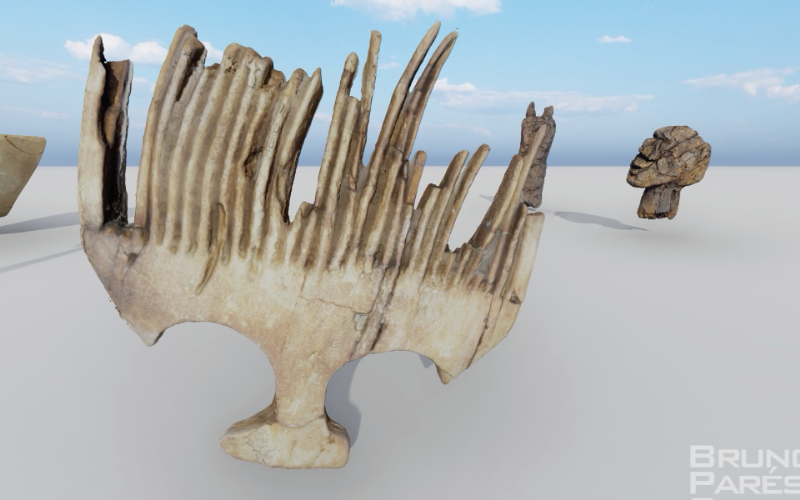 New technologies bring archaeology closer to the public by visualising and virtually manipulating both objects and entire sites. Some of the most interesting sites and objects of Menorca's heritage can now be viewed in 3D from home using a computer or mobile phone.
New technologies bring archaeology closer to the public by visualising and virtually manipulating both objects and entire sites. Some of the most interesting sites and objects of Menorca's heritage can now be viewed in 3D from home using a computer or mobile phone.
The archaeologist and specialist in 3D documentation and virtualisation of heritage Bruno Parés has been commissioned to do so. The expert has been working since 2016 on various sites in Menorca, applying his knowledge of photogrammetry and terrestrial and underwater documentation. Parés has been part of, among others, the research teams that have excavated sa Mola cave or the wrecks of Binissafúller and Calescoves. The Consell Insular de Menorca (Island Council of Menorca) has commissioned him to produce the audiovisuals of the archaeological objects and sites that you will find on this website.
Bruno Parés has also documented some of the most emblematic and fragile pieces from Es Carritx and es Mussol caves. In addition, these objects have been reproduced in 3D printing in order to have a physical replica in the didactic cabinets of the Museu de Menorca and Can Saura in Ciutadella.
Anthropomorphic Carving - Cova des Mussol
This carving is part of a group of wooden pieces and small ceramic vessels found inside room 3c of the Cova des Mussol. Carving on wild olive or olive wood that reproduces the head, face and neck of a man. It has fairly realistic anatomical features, including the supraciliary arches, the jaw and the half-open lips. The individual was depicted with a slight extension of the neck so that he appears to be looking upwards.
It is well finished and has almost all of its surface polished, and in order to achieve the high degree of detail of the physical characters it was necessary to alternate between polishing and cutting. The state of preservation is fairly good, although the right ear and the end of the nose have been lost, two deviations run along what remains of the nose, and the left ear and cheek have insect holes.
Talla Antropomorfa - Cova des Mussol MENORCA by Bruno Parés on Sketchfab
Zooanthropomorphic carving - Cova des Mussol
This carving is part of a group of wooden pieces and small ceramic vessels located inside room 3c of the Cova des Mussol. The cave is located on a cliff in Cala Be, in the Punta Nati area (Ciutadella). Access to it is difficult and dangerous both by sea and by land.
Cut from wild olive or olive wood, it reproduces the head, face and neck of a being with human and animal characteristics. The face could be human, but it has two horns on the top of its head. The eyes are formed by two oblique incisions and the mouth by an horizontal one. No ears were attached and the chin is narrow but prominent. These features give it a severe and haughty expression. It was cut from a trunk or main branch that bifurcated into two growth axes. At the time of discovery it had two breaks that were repaired in the laboratory and there are abundant insect holes.
Talla Zooantropomorfa - Cova des Mussol MENORCA by Bruno Parés on Sketchfab
Wooden vessels
These two wooden vessels, along with another, were found in Room 5 of the Cova des Càrritx. They were made by hollowing out a boxwood trunk with a very sharp tool and then polishing the surfaces with an abrasive instrument. They show signs of wear and tear, which are evidence of continuous use. They may have contained a liquid or paste, as the remains of four spatulas were found nearby. It is possible that these objects are related to the funerary ritual of hair dyeing, which was documented in this cave.
Spatula
This is related to the wooden vessels, and the remains of three other similar objects were found. All of them were made from heather wood.
Comb
This object is made of boxwood, and its design is reminiscent of a bat with its wings outstretched. It was made with the help of blades and files. A wet thread covered with sand may have been used to differentiate the tines, which would have worn away the wood through friction. Like the vessels and spatulas, it would be related to the funerary ritual documented in the cave.